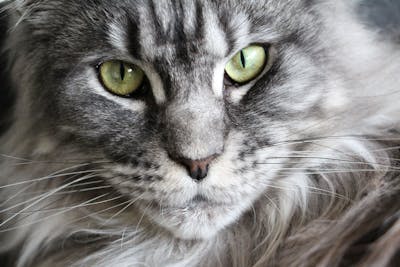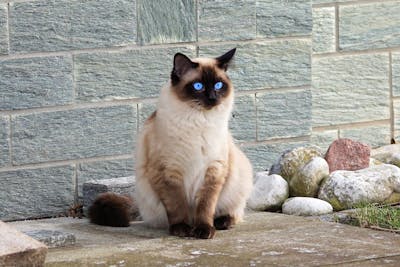Hypoallergenic Cat Breeds: Exploring Low-Allergen Feline Companions

For many people, the dream of owning a cat is often overshadowed by the reality of allergies. The sneezing, watery eyes, and itchy skin can make living with a feline companion seem impossible. However, the concept of “hypoallergenic” cat breeds has offered a glimmer of hope for allergy sufferers. While no cat is truly 100% allergen-free, certain breeds are believed to produce fewer allergens than others, potentially making them a better choice for sensitive individuals. This article will explore the concept of hypoallergenic cats.
It’s important to understand that the primary culprit behind cat allergies is a protein called Fel d 1, which is found in a cat’s saliva, urine, and dander (dead skin cells). Hypoallergenic cat breeds are often those that produce less Fel d 1 or have coats that trap dander more effectively, reducing the amount of allergens released into the environment. This article will delve into the science behind cat allergies and explore some of the breeds often touted as being hypoallergenic. This guide will help you to learn more about these breeds.
This comprehensive guide will explore the factors that contribute to a cat’s allergenicity, discuss some of the breeds often considered low-allergen, and provide practical tips for managing allergies in a cat-owning household. While individual reactions can vary, understanding the nuances of hypoallergenic cat breeds can help allergy sufferers make informed decisions and potentially enjoy the companionship of a feline friend. This article will help you to decide if a hypoallergenic cat is right for you.
1. Understanding Cat Allergies: The Science Behind the Sneeze
Cat allergies are a common problem, affecting an estimated 10-20% of the population worldwide. The primary cause of these allergies is a protein called Fel d 1, which is produced in a cat’s salivary, sebaceous (skin), and anal glands. When cats groom themselves, they spread Fel d 1 onto their fur, which then dries and becomes airborne along with dander. These allergens can trigger allergic reactions in sensitive individuals.
When a person with a cat allergy comes into contact with Fel d 1, their immune system overreacts, producing antibodies that trigger the release of histamine and other chemicals. This leads to the classic allergy symptoms, such as sneezing, runny nose, itchy eyes, skin rashes, and even asthma in severe cases. The severity of the reaction can vary depending on the individual’s sensitivity and the amount of allergen exposure.
It’s important to note that all cats produce Fel d 1, regardless of breed. However, research suggests that some breeds may produce less of this protein than others. Additionally, factors such as a cat’s sex, age, and whether they are neutered or spayed can also influence their allergen production. For example, intact male cats tend to produce more Fel d 1 than females or neutered males.
2. Exploring Hypoallergenic Cat Breeds: Lower Allergen Felines
While no cat is completely hypoallergenic, certain breeds are often cited as being better tolerated by allergy sufferers. These hypoallergenic cat breeds typically fall into one of two categories: those that produce less Fel d 1 and those with coat types that trap dander more effectively. It’s important to remember that individual reactions can vary, and what works for one person may not work for another.
The Siberian is a breed often mentioned as being hypoallergenic. Some studies suggest that Siberians may produce less Fel d 1 than other breeds. They have a thick, triple-layered coat that may also help trap dander. The Balinese, a longhaired relative of the Siamese, is another breed sometimes considered low-allergen. They are believed to produce less Fel d 1 than some other breeds.
The Devon Rex and Cornish Rex, with their short, curly coats, are often recommended for allergy sufferers. Their unique coat type may shed less and trap dander more effectively, reducing the amount of allergens released into the environment. The Sphynx, a hairless breed, is also sometimes considered hypoallergenic. However, it’s important to note that they still produce Fel d 1 in their saliva and skin secretions.
3. Other Potentially Hypoallergenic Breeds: More Options to Consider
The Russian Blue, with its dense, plush coat, is another breed sometimes suggested for allergy sufferers. While there’s limited scientific evidence to support this claim, some anecdotal reports suggest that they may be better tolerated than other breeds. Their coat may help to trap dander and reduce the spread of allergens. These cats are known for their beautiful coats.
The Oriental Shorthair, with its short, fine coat, is another breed that may be a better choice for some allergy sufferers. They are closely related to the Siamese and are known for their sleek appearance and active personalities. Regular grooming can help to minimize shedding and reduce the spread of allergens. These cats are known for their sleek appearance.
The Javanese, a longhaired relative of the Oriental Shorthair, is also sometimes considered low-allergen. They have a single coat that is less likely to shed than the double coats of some other breeds. However, individual reactions can vary, and it’s always best to spend time with a cat before bringing it home.
4. Managing Allergies in a Cat-Owning Household: Practical Tips
Even with a hypoallergenic cat breed, it’s important to take steps to manage allergens in your home. Regularly vacuuming carpets and furniture, using a HEPA air filter, and washing bedding frequently can help reduce allergen levels. Bathing your cat regularly can also help remove allergens from their fur, although many cats are not fond of baths.
Grooming your cat regularly, preferably outdoors, can help remove loose fur and dander. Designating certain areas of your home as “cat-free zones,” such as your bedroom, can also help limit your exposure to allergens. Washing your hands after handling your cat and avoiding touching your face can also help minimize allergic reactions. These are some of the best ways to manage allergies.
Consulting with an allergist is always recommended. They can perform allergy testing to determine the severity of your allergy and recommend strategies for managing your symptoms. They may also suggest allergy shots or other treatments to help desensitize you to cat allergens. These are some of the best ways to manage allergies in a cat-owning household.
While the concept of a completely hypoallergenic cat breed is a myth, certain breeds may produce fewer allergens or have coat types that trap dander more effectively, potentially making them a better choice for allergy sufferers. Breeds like the Siberian, Balinese, Devon Rex, Cornish Rex, and Sphynx are often cited as being low-allergen. However, individual reactions can vary, and it’s crucial to spend time with a cat before bringing it home to see if you react. By understanding the factors that contribute to cat allergies and taking steps to manage allergens in your home, you may be able to enjoy the companionship of a feline friend, even with allergies.
Frequently Asked Questions (FAQs)
1. Are there any truly hypoallergenic cat breeds?
No, there are no truly hypoallergenic cat breeds. All cats produce the Fel d 1 protein, which is the primary cause of cat allergies.
2. What is Fel d 1?
Fel d 1 is a protein found in a cat’s saliva, urine, and dander (dead skin cells). It’s the primary allergen responsible for cat allergies.
3. Which cat breeds are considered hypoallergenic?
Breeds often considered low-allergen include the Siberian, Balinese, Devon Rex, Cornish Rex, Sphynx, Russian Blue, Oriental Shorthair, and Javanese.
4. How can I tell if I’m allergic to a specific cat?
The best way to determine if you’re allergic to a specific cat is to spend time with it in a closed environment and monitor your symptoms.
5. Can I reduce allergens in my home even with a hypoallergenic cat?
Yes, regular cleaning, using a HEPA air filter, bathing your cat, and designating cat-free zones can help reduce allergen levels.
6. Do male or female cats produce more allergens?
Intact male cats tend to produce more Fel d 1 than females or neutered males.
7. Does a cat’s age affect its allergen production?
Kittens may produce less Fel d 1 than adult cats.
8. Can allergy shots help with cat allergies?
Allergy shots, also known as immunotherapy, can help desensitize some people to cat allergens over time. Consult with an allergist for more information.
9. Is it better to get a short-haired or long-haired hypoallergenic cat?
Coat length is not the only factor. Some short-haired breeds may still trigger allergies, while some long-haired breeds, like the Balinese, are considered low-allergen.
10. Where can I find a hypoallergenic cat?
You can find potentially low-allergen cats at shelters, rescue organizations, or through reputable breeders specializing in these breeds. Always spend time with the cat before adopting to assess your reaction.







